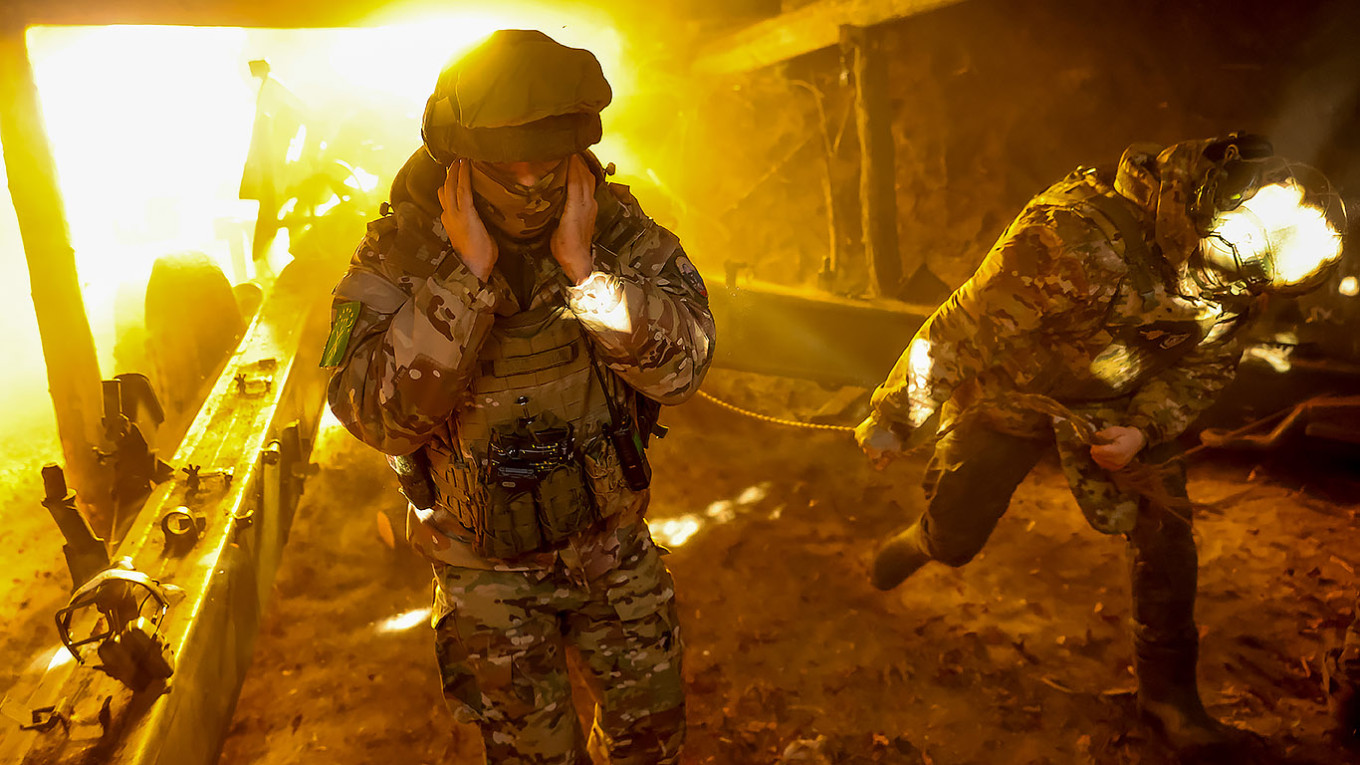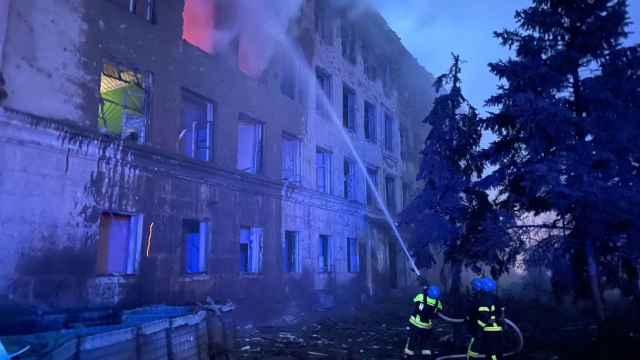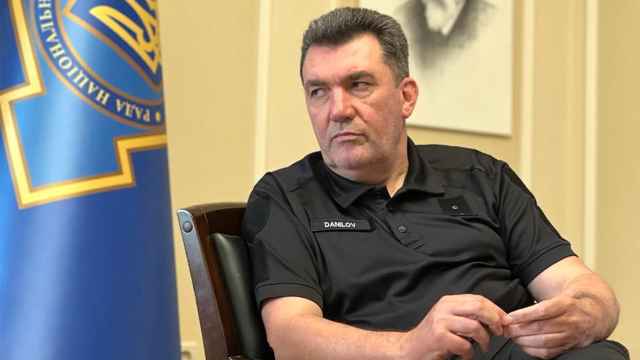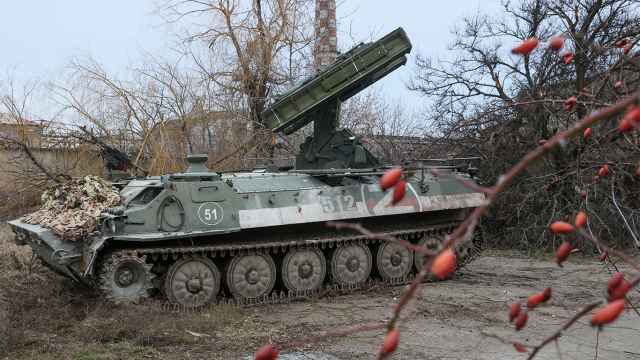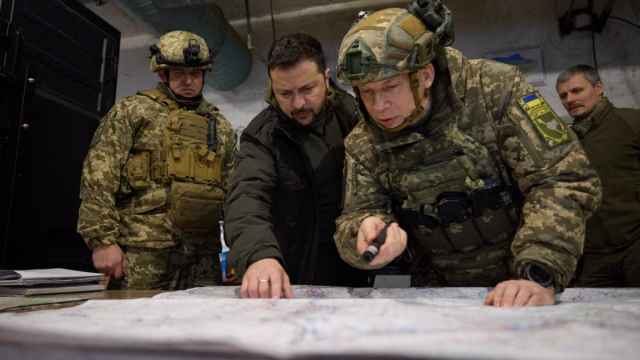Donald Trump’s return to the U.S. presidency has raised hopes that an end to Russia’s three-year war on Ukraine — or at least a ceasefire — may be on the horizon, even as many experts doubt his ability to deliver on his promises to end the war.
While the Kremlin signals readiness for talks, it will demand concessions from Ukraine widely seen as unattainable — fueling speculation that Russia seeks to prolong the conflict, which shifted in its favor in 2024.
Meanwhile, with Ukraine losing ground on the battlefield, Kyiv faces mounting pressure from allies to show flexibility in its conditions for peace.
Whether Trump will de-escalate the conflict or merely deepen divisions remains to be seen.
This is where the three parties stand:
Defeats at the front force Zelensky to consider concessions
Ukraine’s goal is to obtain security guarantees from the U.S. and to end the war with Russia this year, President Volodymyr Zelensky told Italy’s Rainews24 broadcaster this month, voicing hope that Washington would put pressure on the Kremlin.
Zelensky’s recent remarks are a far cry from his rhetoric earlier in the war. In mid-2022, when Ukraine had effectively stalled Russia’s advance, he banned negotiations with President Vladimir Putin.
Since then, the battlefield dynamic has turned, with Ukraine’s summer 2023 counteroffensive falling short of expectations, and Russia making steady gains in 2024. Even Kyiv’s incursion into the Kursk region failed to halt Moscow’s advance in Donetsk.
Ukrainian political analyst Petro Oleshchuk said Kyiv’s change in rhetoric reflects its diminished negotiating position, even as it has stepped up attacks on oil depots, factories and military targets inside Russia.
“Painful blows to Russian infrastructure will serve as arguments in negotiations,” Oleshchuk told The Moscow Times, but these measures are unlikely to carry decisive weight without stabilizing the front lines.
In October, Zelensky presented his Victory Plan to the Ukrainian parliament that outlined Kyiv’s negotiating stance:
- A formal invitation for Ukraine to join NATO;
- Strengthening defense capabilities, including permission to strike Russian territory with Western weapons and enhancing air defense systems;
- Creating a system of non-nuclear deterrence against Russia;
- Attracting Western investors to Ukraine and increasing sanctions on Russia;
- Deploying Ukrainian troops in Europe post-war to reduce reliance on U.S. forces.
Oleshchuk said Zelensky’s Victory Plan is unrealistic given Trump’s apparent readiness to reject Ukraine’s NATO membership and make concessions to Russia and the plan’s reliance on Western allies.
Ukraine's approach to negotiations appears to be edging toward compromise.
Formally, Kyiv rejects the idea of ceding territory, but it is reportedly considering abandoning military efforts to restore territorial integrity if it receives security guarantees in exchange, according to the Financial Times.
Zelensky’s recent acknowledgment that Ukraine lacks the strength to retake Crimea and the Donbas by force further highlights this pragmatic shift.
However, experts interviewed by The Moscow Times believe the war’s end hinges more on the Kremlin’s position than Ukraine’s. Yet Moscow appears to be in no rush to stop hostilities and insists on demands Kyiv cannot accept.
Putin's demands: New territories and NATO exclusion
Since the start of the invasion, Russia has avoided clearly defining its war goals, instead citing vague terms such as the “denazification” and “demilitarization” of Ukraine.
However, Putin did articulate specific demands for peace negotiations in June 2024:
- Ukraine must fully withdraw its forces from the Donetsk, Luhansk, Zaporizhzhia and Kherson regions, allowing Russia to secure its territorial gains and take military control over additional areas.
- Kyiv must officially abandon its NATO membership aspirations.
- The status of Crimea, Sevastopol and other annexed territories in eastern Ukraine as Russia must be recognized in international treaties.
- Sanctions against Russia must be lifted.
He claimed that Moscow would be ready to negotiate “tomorrow” and would immediately order a ceasefire if Kyiv began withdrawing its troops.
Many experts are highly skeptical of Putin’s willingness to end hostilities or make compromises.
Political analyst Vladimir Fesenko told The Moscow Times that Russia’s demands are more likely to be a negotiating ploy than genuine preconditions.
“The continuation of the war alongside parallel negotiations seems more likely. A ceasefire agreement may become possible when a military stalemate arises, and both sides recognize that victory is impossible,” Fesenko said.
Yet the front lines show no signs of such a stalemate.
Over the past year, Russian forces have captured more than 2,660 square kilometers, an area slightly bigger than the size of Moscow — several times more than it seized in 2023.
Its forces are now closing in on the vital logistics hub of Pokrovsk — which, if captured, could open a path to controlling all of the Donetsk region — and is nearing the borders of the Dnipropetrovsk region, which has so far been untouched by the hostilities.
“Putin and the Kremlin have also stated that negotiations will only begin after the Kursk region is fully returned to Russian control. As a result, hostilities will continue, and the issue of military actions in the Kursk region may become another obstacle to starting negotiations,” Fesenko said.
The chances of ending the war by 2025 are slim, agreed political scientist Mykhail Komin, a visiting researcher at the European Council on Foreign Relations.
The Kremlin wants Ukraine to be a weak state susceptible to pressure through force, while Kyiv seeks guarantees to prevent another invasion, he said.
“Putin sees his historical mission as ensuring a loyal government in Ukraine. His goal for 2025 is to maintain pressure on the battlefield and possibly negotiate additional advantages for Russia, such as lifting some sanctions or reaching agreements with Trump on other issues,” Komin said.
Trump’s ambitions and their impact on Ukraine
Despite his pledges to end the war “within 24 hours,” Trump has yet to detail exactly how he plans to do so.
Political analyst Volodymyr Fesenko expressed skepticism over whether there will be any plan at all.
“Many who have studied Trump’s actions note that he negotiates intuitively, without a pre-established strategy,” Fesenko said. “So far, we’ve only seen a collection of ideas. It’s not a peace plan but a set of proposals Trump’s team will promote, some of which are quite specific.”
A set of negotiation points allegedly prepared by Trump’s team and leaked in November by The Wall Street Journal and Reuters entails:
- Freezing the front lines at their current positions;
- A 20-year suspension of Ukraine’s NATO membership;
- Establishing a demilitarized zone with European peacekeepers;
- Continued U.S. arms deliveries to Ukraine to deter Russia.
No further details about the plan have since emerged, leaving experts to speculate about whose side Trump might favor to expedite an end to the war.
Komin said he believes Trump will act based on who is stronger at the time.
“Trump’s formula for peace won’t meet the criteria for a fair resolution. It’s likely to reflect a realpolitik approach, closer to Putin’s stance — ‘might makes right’,” he suggested.
He said Trump may try to initiate a peace process through phone calls and meetings with Ukrainian and Russian leaders but doubts it will yield results due to both sides’ unwillingness to compromise.
Komin noted that although Trump’s proposals may favor Russia over Ukraine, European leaders are unlikely to let Ukraine be excluded from negotiations with Moscow.
Trump’s cabinet appointments offer clues about the new White House’s approach to Ukraine. His incoming National Security Advisor Mike Waltz has criticized Russia’s invasion but previously voted against financial and military aid to Ukraine.
This month, Waltz said plans for talks between Trump and Putin were already underway and that a call could take place in the coming days or weeks.
“Everyone knows this has to end diplomatically. I just don’t think it’s realistic to say we’ll push every Russian out of every inch of Ukrainian territory,” Waltz said.
Senator Marco Rubio, who has argued for ending the war in Ukraine as quickly as possible, is set to become the next Secretary of State. Trump’s controversial pick for Director of National Intelligence, Tulsi Gabbard, has voiced sympathetic views toward Russia, including justifying its concerns over Ukraine’s NATO membership at the start of the invasion.
Political analyst Oleshchuk said that while many Trump appointees have criticized U.S. aid to Ukraine, most have little influence over U.S. foreign policy.
He underscored that figures like Waltz and Trump’s special envoy for Ukraine, Keith Kellogg, advocate for ending the war and support Ukraine’s armament but do not see reclaiming occupied territories including Crimea as a realistic goal.
“Trump clearly sees no point in defending Ukraine’s territorial integrity, but that doesn’t mean he wants to hand the country over to Russia or accept defeat in Ukraine,” Oleshchuk said.
A Message from The Moscow Times:
Dear readers,
We are facing unprecedented challenges. Russia's Prosecutor General's Office has designated The Moscow Times as an "undesirable" organization, criminalizing our work and putting our staff at risk of prosecution. This follows our earlier unjust labeling as a "foreign agent."
These actions are direct attempts to silence independent journalism in Russia. The authorities claim our work "discredits the decisions of the Russian leadership." We see things differently: we strive to provide accurate, unbiased reporting on Russia.
We, the journalists of The Moscow Times, refuse to be silenced. But to continue our work, we need your help.
Your support, no matter how small, makes a world of difference. If you can, please support us monthly starting from just $2. It's quick to set up, and every contribution makes a significant impact.
By supporting The Moscow Times, you're defending open, independent journalism in the face of repression. Thank you for standing with us.
Remind me later.



